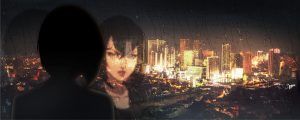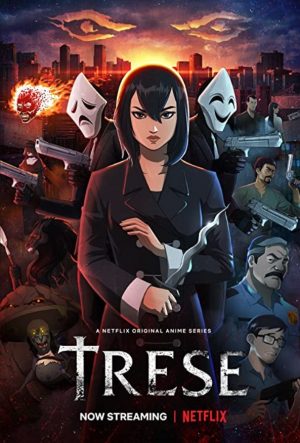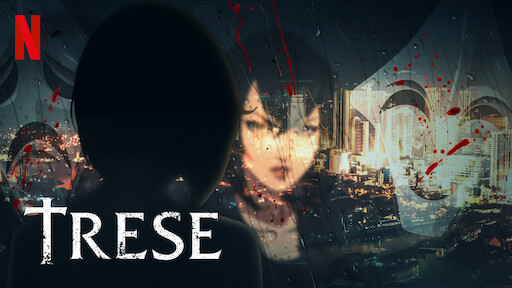
With streaming platforms like Netflix producing their own series, more hidden gems from across the globe get a chance to hit the limelight. The recent Filipino animation, Trese, is a good example of that. Set in modern-day Manila, young Alexandra Trese serves as the guardian maintaining the balance between the mortal and supernatural world. Delving into Philippine mythology, we are greeted by a slew of unfamiliar creatures and gods. It’s a pleasant surprise indeed as fresh cryptids grace our screens. However, a new mythos means a long list of unfamiliar vocabulary and names. Do not fret. Here are ten creatures featured in Trese that we find rather interesting and their respective Philippine myth origin.
1. Aswang
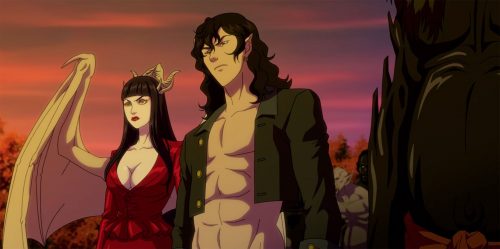
The first supernatural to make its appearance is the aswang. They make a strong first impression as they climb the train rails and gang up on a group of three. At first, they seem like an evolved version of zombies, but it’s later revealed they have intellect on par with humans and can even manage their own meat market.
In Philippine folklore, an aswang is a general term used to describe diabolical shapeshifting creatures. They often have rabid eyes, sharp teeth, and love preying on people during the night. Since the Philippines is an archipelago consisting of more than a thousand islands, an aswang’s feature also varies from one place to another. What everyone agrees on is that these creatures are not what you want to cross paths with during the night.
2. Nuno
In Trese, Nuno is Trese’s friendly informant. It lives in the sewers and is often summoned by Alexandra Trese by saying “Tabi-tabi po.” In exchange for his services, Trese and even Hank offer him chocolate candies.
Interestingly, its counterpart in the Philippine myth is a bit different. Nuno literally translates to ancestor. Yes, meaning an old being, which also explains Nuno’s design. Instead of a manhole, a nuno or nuno sa punso typically lives in an anthill or a termite mound. They are generally harmless beings, but everything changes once their homes are disturbed, accidentally or on purpose. According to legends, the nuno returns the damage to the body part that did the damage twofold. This means the one who either destroys or hits the mound will get sick, dizzy, or have inflamed body parts. The best and funniest bit is that others might even be punished by being cursed with inflamed genitalia should they urinate on the mound.
3. Tikbalang
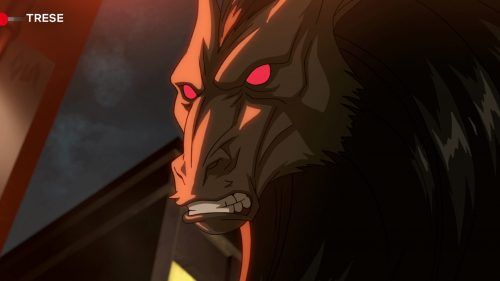
We’ve met Maliksi, the son of the chief of the tikbalangs, in Trese. Young Trese seeks the aid of the chief as a human has gone missing and evidence points to a tikbalang being the culprit. That’s when she conjured a plan to lure Maliksi into a drag race, which eventually leads to Maliksi transforming into his true form. Despite revealing his half-horse, half-human form, he still fails to beat Trese and is forced to comply with their agreement.
Unlike the centaurs of the west, the tikbalang is basically an anthropomorphic horse rather than a creature with the upper body of a human and a lower body of a horse. They not only look like a horse, but they are also known for having superhuman strength and speed. No wonder his name is Maliksi, as that directly translates to fast or agile in Filipino.
4. Babaylan
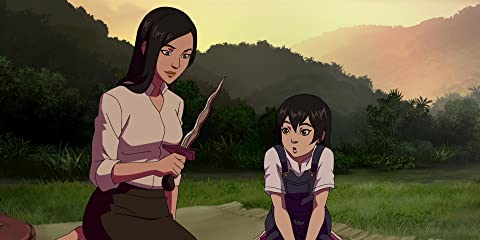
Both Alexandra Trese and her mom are babaylans. From a young age, her mother has taught her various teachings, spells, and ways of the babaylan, allowing her to be a proficient warrior and healer when her time to be the Lakan of Sangkatauhan came.
Unlike the inhuman characters in this list, a babaylan is just a human with spiritual gifts. In Philippine folklore, babaylans have the ability to heal, grant divinations, and foresee the future to a certain extent. They are also referred to as the mediator to the spirit world, where they get their powers in the first palace. The western equivalent of this are the shamans and druids.
5. Datu Talagbusao

One of the only two gods presented in the series, Datu Tagbulao serves as the series’ main antagonist. He is introduced as the war god who loves violence and killings. The moment he gets summoned into this world, he kills his human wife and aims to eradicate the world as we know it. Perhaps the only good things that came out of him are the kambal, Crispin and Basilio.
Talagbusao is the war god once worshipped in Bukidnon province. Just like what’s presented in Trese, he is a feared deity among locals of Bukidnon and is also known as the god of calamity. However, he isn’t the supreme deity. He is only a lesser divinity working for the supreme being, Magbabaya. His true name is Talagbusao as the word Datu is a title and not a name.
6. Multo
Multo is probably the most common supernatural being in every folklore. In Trese, however, they don’t play much of a big role. The two multos with relevant enough roles that we’ve seen are the White Lady sa Balete Drive in the first episode and Jobert, the friendly techy multo. Yes, you’ve guessed it. Multo is basically a ghost and the word is really just a direct translation, too.
7. Bagyon
Another tribe of elementals is the Bagyon. We are introduced to Bagyon Lektro and Bagyon Kulimlim, the chief of the tribe and his son. They are lightning elementals and have appropriately adapted to modern society by owning the country’s biggest electric company. Just like Maliksi, Kulimlim is still quite rebellious and even had the gall to attack Alexandra and the Kambal in broad daylight. As a result, Alexandra ends up killing him, much to the fury of Bagyon Lektro.
Unfortunately, the bagyon isn’t really a part of Philippine mythos. Even though the Philippines has its own respective gods and goddesses of thunder and lightning, a lightning elemental called the bagyon just doesn’t exist. However, the term isn’t just a brainchild of the series’ creators. In Filipino, bagyo means typhoon. Adding the suffix -ng to it makes it a descriptor, thus Bagyon Lektro might actually mean Typhoon Lektro. As the Philippines is frequented by tens of typhoons a year, this is highly likely a nod to that.
8. Duwende
The only duwende we meet in the series is Amang Paso, a mushroom-looking little creature and chief of the Red Earth. He claims to be the guardian of the esteemed actress Nova Aurora. He does his best to ensure both her safety and career no matter what he must do. He also commands earth elementals called lamanlupa, which act as his soldiers and bodyguards.
Duwendes’ western counterparts are the dwarves. They are playful, but magical creatures who are known to live in earth mounds, trees, and mushrooms. Just like in Trese, duwendes of Philippine folklore are classified into different colors representing their temperament. The black ones are the bad ones doing people harm. Even though the other duwendes aren’t innately harmful, that doesn’t mean they can’t do harm. Due to their playful personalities, they often pull pranks on humans. Let’s just say that they don’t really have a good idea what too much is. Also, just like the nuno, their behavior also changes depending on humans’ behavior towards them.
9. Ibu
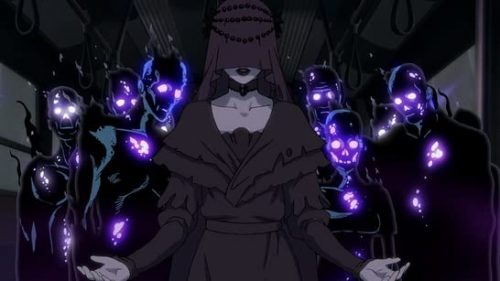
The other god introduced in Trese is Ibu, the goddess of death. Unlike Talagbusao, however, we haven’t seen Ibu yet. She only sends her emissary both to converse, negotiate, and assist young Trese. As the goddess of death, Ibu heralds the spirits of the dead to the underworld. But since young Trese is the mediator between the two worlds, she has to ask for her permission to use the MRT or the Metro Rail Transit as her base of operation.
Ibu is the goddess of the underworld of the Manobos, an indigenous group in the Philippines. Similar to Trese, Ibu rules the spirits of the deceased in the underworlds. It is also customary to the Manobos to send their dead in their best clothing. Interestingly, the Manobos also invite the deceased during the feast of the dead, which is presided by the babaylan.
10. tiyanak
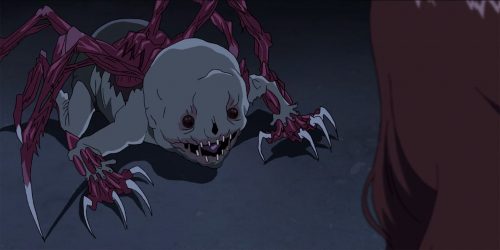
Arguably, the tiyanak is the most scary creature in the entirety of the series. We are presented with a spider-looking baby complete with glowing red eyes and terrifying shrills for a scream. It moves like a spider and is even shown to attack humans, exemplified by Dr. Petra. In terms of appearances, nothing screams "being a monster" more than the tiyanak.
In Philippine lore, a tiyanak’s origin is as heartbreaking as that in Trese. They are believed to be spirits of both aborted babies, as well as those voluntarily left or buried in the forest. Aggrieved, they remain in this world as vampiric baby corpses preying on humans. Similar to that in Trese, they pretend to be normal babies through their wails. But as soon as they are picked up, they attack the victim using their sharp teeth and claws.
Final Thoughts
Mythology is always an interesting topic to tackle. It not only represents an entirely new lens on seeing the world, but it also reflects the culture and tradition of those who believe in it. This is especially true in terms of burial rites and festivities, just like what the Manobos do to their deceased. In the artistic sense, creating a fictional world on an already established fictional world allows us to understand the folklore deeper while also having a good time.
Recommended Post
Ikai Tantei Trese (TRESE)
Recommended Post


